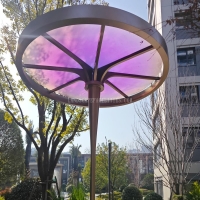Welcome to the website for landscape facilities products and knowledge.
How does the table’s design account for expansion or contraction due to temperature fluctuations?
Quality table construction requires sophisticated engineering to accommodate the natural expansion and contraction that occurs with temperature fluctuations. Wood, metal, and other materials naturally expand when heated and contract when cooled, creating significant structural challenges if not properly addressed in the design phase.
Experienced furniture makers incorporate several key strategies to manage thermal movement. Expansion joints represent one crucial technique, where deliberate gaps are left between table components to allow for dimensional changes. These joints may appear as subtle spaces between tabletop boards or as specialized hardware connections that permit slight movement without compromising structural integrity.
Material selection plays an equally important role. Different wood species exhibit varying coefficients of thermal expansion, with quarter-sawn lumber demonstrating superior dimensional stability compared to plain-sawn alternatives. Modern composite materials and engineered woods are specifically formulated to minimize movement, while metal components require careful consideration of their different expansion rates when combined with wood.
The grain orientation within wooden tables significantly influences how they respond to humidity and temperature changes. Tables constructed with alternating grain patterns can counteract the forces of expansion, while breadboard ends—those perpendicular pieces attached to table ends—are traditionally designed to allow for horizontal movement while maintaining a straight edge.
Fastening systems have evolved to accommodate thermal dynamics. Specialist hardware including figure-8 fasteners, slotted metal brackets, and oversized screw holes enable tabletops to expand and contract while remaining securely attached to their bases. This approach prevents the cracking, warping, and joint failure that commonly plagues poorly designed furniture.
Through these deliberate design choices, quality tables maintain their structural integrity and aesthetic appeal across seasonal changes, demonstrating how thoughtful engineering creates furniture capable of withstanding the test of time and temperature variations.
Related search:

Recommendation
Metal frame with gradient color acrylic combined with high-end shading landscape facilities